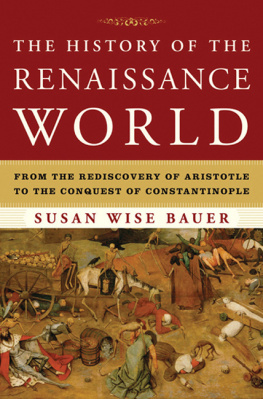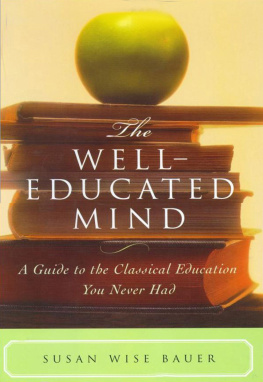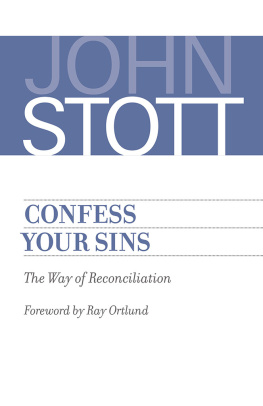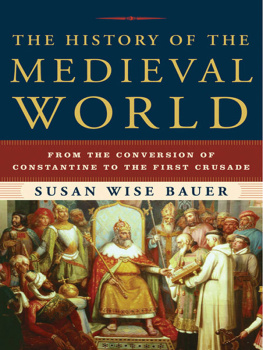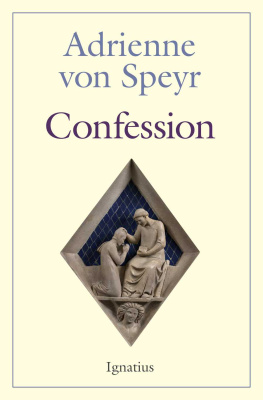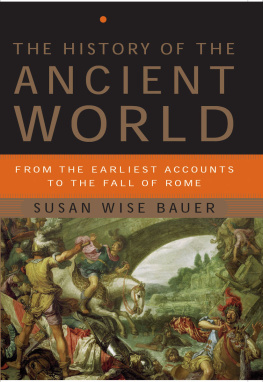THE ART OF
THE PUBLIC GROVEL
THE ART OF THE
PUBLIC GROVEL
SEXUAL SIN AND
PUBLIC CONFESSION
IN AMERICA
SUSAN WISE BAUER

Copyright 2008 by Princeton University Press
Published by Princeton University Press, 41 William Street, Princeton, New Jersey 08540
In the United Kingdom: Princeton University Press, 6 Oxford Street, Woodstock, Oxfordshire OX20 1TW
All Right Reserved
Library of Congress Cataloging-in-Publication Data
Bauer, S. Wise.
The art of the public grovel : sexual sin and public confession in America / Susan Wise Bauer.
p. cm.
Includes bibliographical references and index.
ISBN 978-0-691-13810-7 (hardcover : alk. paper) 1. Sex scandalsUnited StatesHistory. 2. PoliticiansSexual behaviorUnited StatesHistory. 3. PresidentsSexual behaviorUnited StatesHistory. 4. ConfessionSocial aspectsUnited StatesHistory. 5. EvangelicalismUnited States. 6. United StatesMoral conditions. I. Title.
HQ18.U5B34 2008
17dc22 2008020570
British Library Cataloging-in-Publishing Data is available
This book has been composed in ITC New Baskerville with Trajan display
Printed on acid-free paper.
press.princeton.edu
Printed in the Unites States of America
10 9 8 7 6 5 4 3 2 1
CONTENTS
LIST OF ILLUSTRATIONS
FIGURE 1.1. Cleveland the Celibate
Source: Bernhard Gillam. Puck, April 18, 1884, p. 117.
FIGURE 1.2. The Great American Game of Public Office for Private Gain
Source: Thomas Nast. Harpers Weekly, August 9, 1884, p. 523.
FIGURE 1.3. He Instituted the Ordeal. Can He Stand It Himself?
Source: Bernhard Gillam, Puck, August 13, 1884, p. 187.
FIGURE 1.4. Belshazzer Blaine and the Money Kings
Source: Walt McDougall, New York World, October 30, 1884, page 1.
FIGURE 1.5. Grover the Good (Another Voice for Cleveland)
Source: Frank Beard, The Judge, September 27, 1884, p. xii.
FIGURE 3.1. The Angelus Temple
Source: The Bridal Call magazine, 1924. (Scan provided by the Foursquare Heritage Center, Los Angeles, CA.)
FIGURE 3.2. Suffrage Injuries: The Governments Methods of Barbarism
Source: A. Patriot, Votes for Women, January, 1910.
FIGURE 4.1. Oral Robertss Prayer Line
Source: Photo courtesy of the Oral Roberts Association, Inc., Tulsa, OK.
FIGURE 5.1. The Delegate from Chappaquiddick
Source: National Lampoon, no. 28, July 1972. Photo courtesy of National Lampoon.
FIGURE 5.2. Floating Volkswagen
Source: National Lampoon Encyclopedia of Humor, ed. Michael O Donoghue, 1973. Photo courtesy of National Lampoon.
FIGURE 5.3. Kennedys Television Appearance
Source: ABC News broadcast, July 25, 1969. Still Photo courtesy of ABC News.
FIGURE 7.1. Nostalgia at Heritage USA
Source: From Jim and Tammy Bakker Present the Ministry of Heritage Village Church, PTL Ministries, Inc., no date.
FIGURE 7.2. Decay at Heritage USA
Source: Photo courtesy of Ryan O Neill.
ACKNOWLEDGMENTS
THIS STUDY owes a great debt to Maureen Fitzgerald of the College of William & Mary, who consistently encouraged me to look at Protestant and Catholic practices of confession in relationship to each other and not (as was my tendency) in isolation. At William & Mary, Chandos Brown and Susan Donaldson also provided immensely helpful feedback and criticism. Mark Noll did a careful and much-appreciated reading of an earlier draft of the manuscript. Jonathan Gunderlach cleared the permissions and located illustrations with efficiency and expertise. Final thanks go to Fred Appel at Princeton University Press for his willingness to read multiple drafts and his expert editorial advice. Since I didnt take all of the good advice offered me by these excellent scholars, the final form of the book is my responsibility alone.
THE ART OF
THE PUBLIC GROVEL
INTRODUCTION
FROM PRIVATE TO PUBLIC CONFESSION
ON THE EVENING of August 17, 1998, Bill Clinton faced the American public with an embarrassing admission. Despite earlier denials, he had indeed been carrying on with a White House intern twenty years his junior. I did have a relationship with Miss Lewinsky that was not appropriate, he said. In fact, it was wrong. I know that my public comments and my silence about this matter gave a false impression. I misled people, including even my wife. I deeply regret that.
He regretted it even more when the House of Representatives impeached him for perjury. But two months later, the Senate voted to acquit him. His approaches to evangelical leaders before and leading up to a White House prayer breakfast succeeded in garnering him public expressions of support from superstar ministers Gordon MacDonald and Tony Cam-polo, among others. He left office with a 65 percent approval rating, higher than any other departing president in history; five years later, another poll found that he was not only more popular than the incumbent president, but was also considered more honest. His autobiography, released in 2004, sold more than 400,000 copies in hardback; he won a Grammy for the audiobook version, which he read himself. In 2006, he received several honorary doctorates, as well as the Fulbright Prize for International Understanding. In that same year, Hillary Clintons staff told the Atlantic Monthly that the ex-President was encouraged to stay away from his wifes fundraising events, since it was impossible to keep media attention away from him and on the Senator.
Four years after Clintons admission, an entirely different sort of confession unfolded in front of a much less receptive crowd of listeners. On November 3, 2002, Bernard Cardinal Law faced his congregation at the Cathedral of the Holy Cross in Boston and told them, I did assign priests who had committed sexual abuse. I acknowledge my own responsibility for decisions which led to intense suffering. I ask forgiveness in my name and in the name of those who served before me.
But this confession did not redeem Cardinal Law in the eyes of either his flock or his colleagues. A public call by other priests for Laws resignation forced him to step down just four weeks after his Holy Cross confession. He also resigned his position as chairman of the board of The Catholic University of America, then left the United States and moved to Rome.
Clintons success and Laws failure signal the final stages of a massive shift. At the end of the twentieth century, Americans increasingly expected their erring leaders to publicly admit their sin and ask for forgiveness. Even as evangelicals complained about their diminishing influence in America, the evangelical ritual of public confession assumed center stage in secular American culture.
Apology and confession are not the same. An apology is an expression of regret: I am sorry. A confession is an admission of fault: I am sorry because I did wrong. I sinned.
In the last few years, public figures have apologized with increasing frequency. But these apologies often serve as red herrings, drawing the eye and ear away from the missing confession. I got heckled and took it badly and went into a rage, comedian Michael Richards said in 2006, after hurling profanities at black patrons in a comedy club. Im deeply, deeply sorry. There was no admission of wrongdoing here, merely a description of the evenings happenings, along with an apology. My intent was to tell what happened on the mountain as accurately and as honestly as possible, journalist Jon Krakauer wrote, at the end of his best-selling Mount Everest memoir,
Next page


